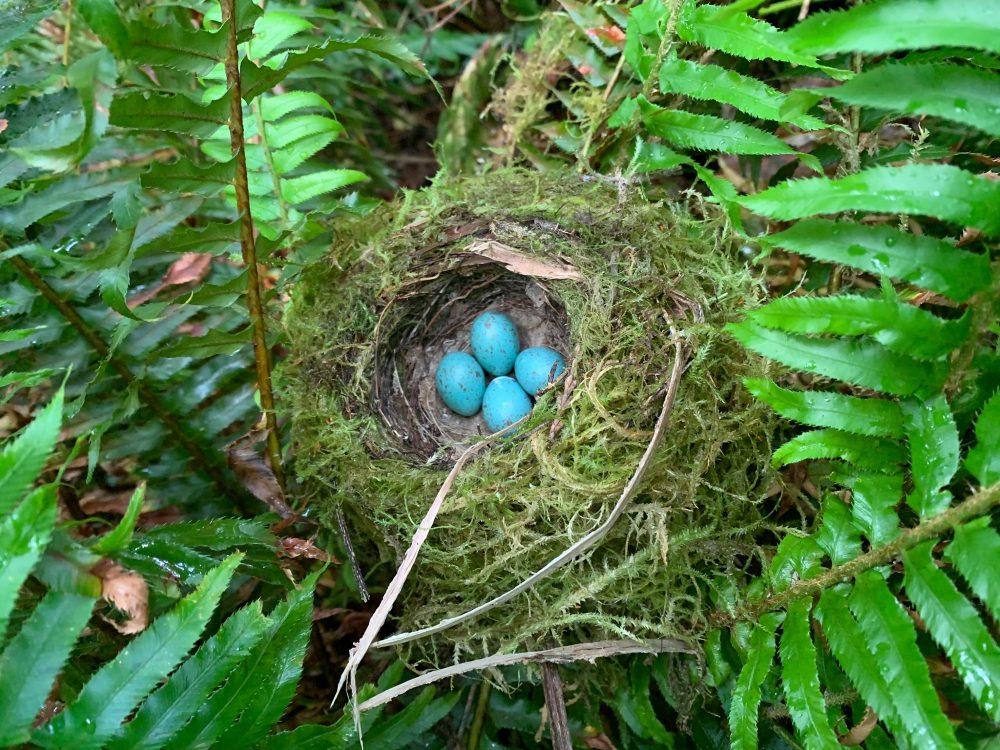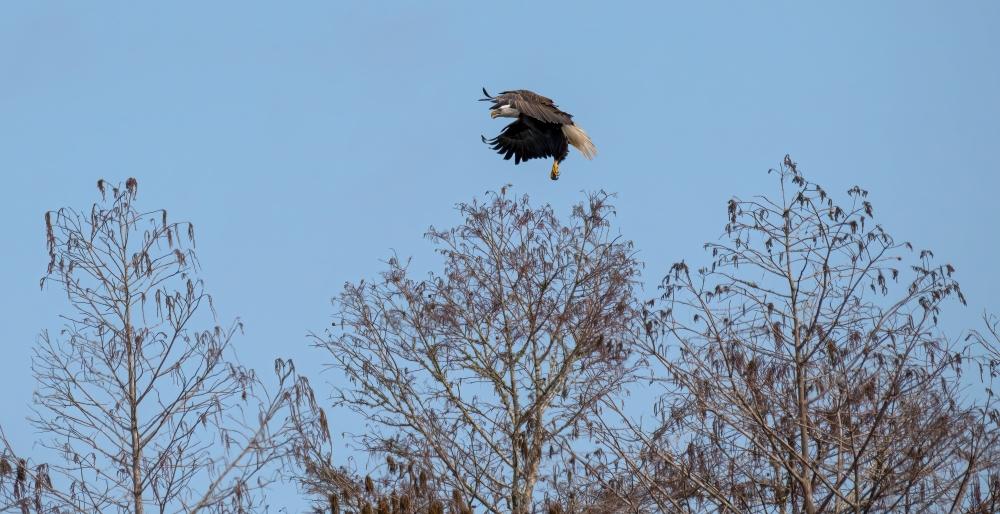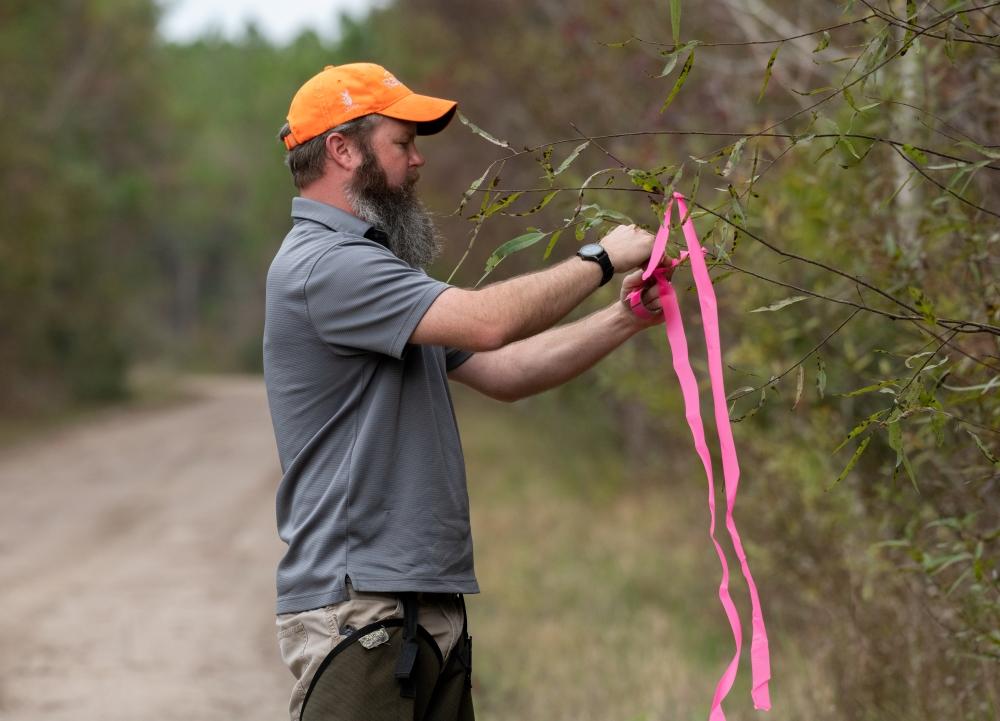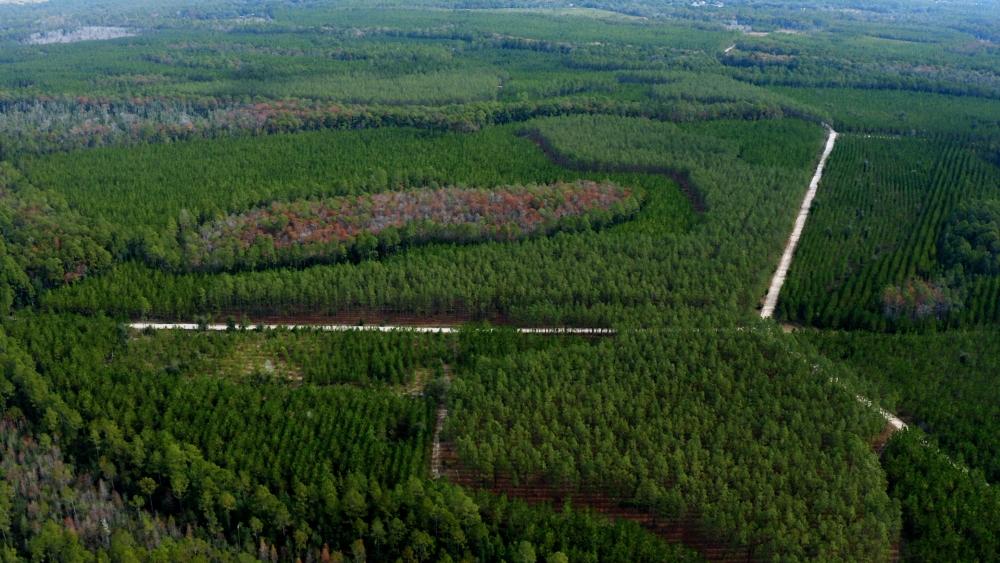Why Is Forest Biodiversity Important?
Published 01-19-23
Submitted by Rayonier
In planted forests, biodiversity plays a critical role in the health of the forest and the environment at large. This article looks at what forest biodiversity is and how forestry companies like Rayonier protect and promote biodiversity.
We’re known for the products our trees will one day be used to produce, but did you know biodiversity plays a critical role in the work that timber companies do?
From the tree species we choose for our forests to the waterways, ecosystems and threatened and endangered species we protect, biodiversity is central to our decision-making every day.

What is Forest Biodiversity?
Simply put, biodiversity is the mix of plant and animal species that can be found in a given location. The greater quantity and variety of healthy, native species that are found in an ecosystem, the better. A flourishing forest provides food, shelter and clean air and water to support a wide range of species.
Within a forest, biodiversity refers to everything from the earthworms and bugs burrowed in the soil, to the land animals foraging on the ground, to the squirrels and birds in the trees. A scientific term for these species is “fauna.” Biodiversity also includes “flora,” which is a scientific term referring to plant species. In the forest, this includes the trees themselves as well as other plant species that grow among them, such as flowers, berry bushes and fungi like mushrooms.

Why is Forest Biodiversity Important?
Our world’s forests are home to the majority of all wildlife, with 80 percent of amphibian species, 75 percent of bird species, and 68 percent of the world’s mammal species, according to the Food and Agriculture Organization of the United Nations’ State of the World’s Forests report. The report says 31 percent of our world is forest land.
But not all species can live in the same forests. The type of tree species and tree ages, terrain, climate, shade or lack of shade, water resources, and many other factors can create very different types of habitats. In an extreme example, the species that thrive in a mountainous pine forest in a cold weather climate would not survive in a tropical rainforest. But even within a single region, there can be many forest types, each of which support different plant and animal species. For example, a Rayonier property in the Southeast may include upland forests with dry, sandy soils that support one subgroup of plant and animal species as well as low-lying wetlands that support an entirely different subgroup.

Is there Biodiversity in Commercial Forests?
Sustainably-managed commercial forests in which companies grow timber in a carefully-planned way, also known as “working forests, support a rich variety of other plant and animal species while the planted trees grow. We created a website, biodiversity.rayonier.com, in which you can explore our forests and see some of the species that live among our trees.
Our forests are third-party certified by the highest sustainability standards in our industry, including the Sustainable Forestry Initiative in the U.S. and the Forest Stewardship Council and Programme for the Endorsement of Forest Certification in New Zealand. We voluntarily submit to these standards to ensure we’re protecting the environment and the species within the ecosystems we’re responsible for while our trees grow. Auditors routinely inspect our forests and interview our employees to ensure we’re meeting the standards.

To protect biodiversity in the U.S., for example, we only plant tree species that are native to the region we are growing them in. We protect waterways and ensure chemical treatments are kept far from these areas. We locate and protect the habitats of vulnerable species like bald eagles, gopher tortoises and northern spotted owls.
We also manage our harvests in a way that ensures we have a variety of forest ages in each region. This is good for biodiversity since different forest ages support different types of species. For example, open, sunlit young forests allow plants like berry bushes to grow, providing food for grazing animals and pollinators. Older, shaded forests provide shelter to tree-dwelling species and food like pinecones and acorns. The variety of forest ages is also good for our business, as it ensures we will continue to have a sustainable supply of wood for generations to come. Whenever we harvest a forest, we typically replant many times more trees on the same site within a year or two.
As a responsible steward of the land, however, we do not manage all of our land for timber production. In the U.S., about a third of our land is wetlands we choose to protect rather than actively manage for timber.

What is the Role of the Trees In Forest Biodiversity?
Trees are central to forest biodiversity, serving as an anchor for the ecosystem. Some of the roles trees play in forest biodiversity include:
- Holding soil in place. With their deep, strong, extensive root systems, trees prevent erosion and ensure a healthy growing medium for plant life. Soils are also important for ground-dwelling animals to burrow. Trees’ anchoring effect on soils also protects water systems from sedimentation, which occurs when loose soils and other materials pollute the water.
- Protecting the water supply. In addition to preventing erosion, trees are part of a natural filtration system as water seeps into the ground after a rainfall. This replenishes underground water sources, such as aquifers, and also allows the water to naturally make its way into streams. In this way, clean water is provided for both aquatic and terrestrial wildlife and humans.
- Protecting air quality. Trees and the soils they hold in place play an incredibly important role in protecting air quality. As a tree grows and undergoes photosynthesis, it captures excess carbon dioxide out of the atmosphere. This carbon is distributed into the tree itself and the soil around it. The tree will hold and store that carbon for the rest of its life. Or, in the case of trees used for timber, the products they become will continue to store the carbon. You can learn more about the process of carbon capture and storage by watching our carbon video here.
- Providing shade and shelter. As the largest species in the forest, trees provide the shade needed to keep plants and animals cool and shaded from the sun. Shade-loving plants and fungi thrive on the forest floor. Many animals are sheltered by the trees, whether hiding among them on the ground or making a home in the branches above.
- Serving as a food source. Trees provide food to many different species. Hardwoods are known for producing mast, such as the acorns oak trees produce. These are a favorite food for animals like deer. Other species eat the seeds from pinecones, leaves from smaller trees, and fruit from fruit-producing trees. Even dead trees are a food source: Insects will burrow in and eat rotting wood. Woodpeckers will then make holes in the wood and eat the insects.
What do Timber Companies do to Protect Biodiversity?

Sustainable timber companies take biodiversity into account in all forestry activities.
We follow Best Management Practices, or BMPs, to ensure critical habitats and water courses are protected. We also set up large buffer zones around water courses, where harvesting and chemical applications will not take place. Rayonier protects about 12,000 miles of waterways and about 1 million acres of wetlands across our U.S. ownership alone.
Our foresters are specially-trained to recognize the habitats of vulnerable species and protect them. For example, when a forester is working near the home of a gopher tortoise in the U.S. South, protecting its burrow is a priority. We will hand-plant instead of machine-planting trees to protect tortoise burrows. When it’s time to harvest trees near a gopher tortoise home, we’ll first mark the location of active burrows to ensure heavy equipment stays far from them. We’ll also ensure our logging contractors are trained to recognize and protect burrows.
The same is true for other key species. A boundary line is set up to protect bald eagles’ nests as long as they’re in existence. In the Pacific Northwest, culverts and bridges deemed to be too small for the natural flow of water are replaced with larger stream crossings to protect the salmon population. And in Alabama, we protect the extremely rare Red Hills salamander by blocking off a radius around steep cliff sides that could serve as a home to the lungless amphibian.

Why Forest Biodiversity in Commercial Forests matters
While it’s true that commercial forestry companies are in the business of growing trees to meet human consumer needs, our role in forest biodiversity is also incredibly important. In fact, more than half of forests in the U.S., about 67 percent or 514 million acres, are working forests, according to the National Council for Air and Stream Improvement.
Nonworking forests such as state and national parks are often dominated by older forests. With our “mosaic” of forest ages, working forests provide homes to species that depend on younger, more open forests while also providing older forests nearby.
The large amount of acreage commercial forest landowners possess also allows us to create large, continuous wildlife corridors. These protected buffer areas around waterways and wetlands are especially important to larger animals who need the room to roam as nature intended.
For all of these reasons and more, we’re proud to do our part in protecting biodiversity in forests across the U.S. and New Zealand!
Rayonier Biodiversity
Discover the wildlife and plantlife in our forests through an immersive digital experience.

Rayonier
Rayonier
Rayonier (NYSE:RYN) is a leading timberland real estate investment trust with assets located in some of the most productive softwood timber growing regions in the United States and New Zealand. We own or lease under long-term agreements approximately 2.8 million acres of timberlands located in the U.S. South, U.S. Pacific Northwest and New Zealand. We are More than trees because we recognize that our 90+ years of success in the timberland industry comes from our people, an empowering culture and the courage to constantly challenge “the way it’s always been done.” Get to know us at www.rayonier.com.
More from Rayonier

